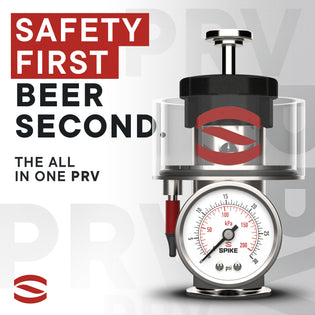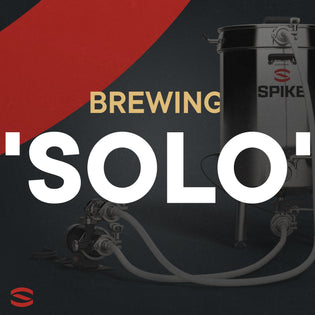By: Taylor Patton
Pressure fermentation is a game-changer for homebrewers and commercial brewers alike. It’s a technique that takes the traditional process of brewing and elevates it by fermenting beer under pressure, usually between 3 and 15 psi. This method not only speeds up fermentation but also improves the quality of the final product, from flavor to clarity. So how exactly does this happen? Let's get into the details...

How Pressure Fermentation Works
In traditional brewing, fermentation occurs at atmospheric pressure. Yeast consumes the sugars in the wort, producing alcohol and carbon dioxide (CO2) as byproducts. This CO2 usually escapes through an airlock or blow-off tube. However, in pressure fermentation, the CO2 is trapped inside the fermentation vessel, creating a pressurized environment. This pressure impacts the yeast’s behavior and the overall fermentation process.
One of the most significant benefits of pressure fermentation is its effect on ester and fusel alcohol production. These compounds contribute to the fruity and sometimes solvent-like flavors in beer. Under pressure, yeast produces fewer esters and fusel alcohols, leading to a cleaner-tasting beer. This is particularly beneficial for brewing lagers and other styles where a clean flavor profile is desired.
Another advantage is that pressure fermentation allows you to ferment at higher temperatures without producing off-flavors. Normally, fermenting at higher temperatures can lead to unwanted flavors, but the pressure suppresses these byproducts, enabling quicker fermentation without sacrificing quality.
The Role of a Pressure Relief Valve (PRV)
A crucial component of pressure fermentation is the Pressure Relief Valve (PRV). The PRV ensures that the pressure inside the fermentation vessel doesn’t exceed safe levels. Spike’s All-In-One Pressure Relief Valve is designed specifically for this purpose, making it an essential tool for anyone looking to experiment with pressure fermentation.
The PRV automatically vents excess CO2 if the pressure inside the fermenter goes beyond the set limit. This feature is vital for preventing over-pressurization, which could otherwise lead to equipment damage or even a dangerous situation. With Spike’s PRV, you can set your desired pressure level, and the valve will maintain it by releasing excess gas when necessary.
BREWERS NOTE: CO2 produced by yeast must be handled carefully, otherwise the vessel can become over pressurized, making it very dangerous. This is why a large-port robust PRV is so important. A PRV is designed to automatically vent CO2 gas from inside your fermenter at a set pressure. Since Spike fermenters are designed for 15psi, that’s what the All-In-One PRV is designed to release at. The seal and spring lifts to allow it to escape or “bubble out.”
Safety First, Beer Second
Pressure fermentation is an advanced technique that offers numerous benefits, from speeding up the brewing process to improving the overall quality of your beer. Spike’s All-In-One Pressure Relief Valve is an indispensable tool for anyone looking to explore this method.
By safely managing the pressure within your fermenter, Spike’s PRV ensures that you can enjoy all the advantages of pressure fermentation without the risks.
Whether you’re a seasoned brewer or just starting, incorporating pressure fermentation into your brewing process with the help of Spike’s PRV can elevate your beer to new heights. The combination of faster fermentation, cleaner flavors, and improved hop aroma retention makes pressure fermentation a technique worth trying.









